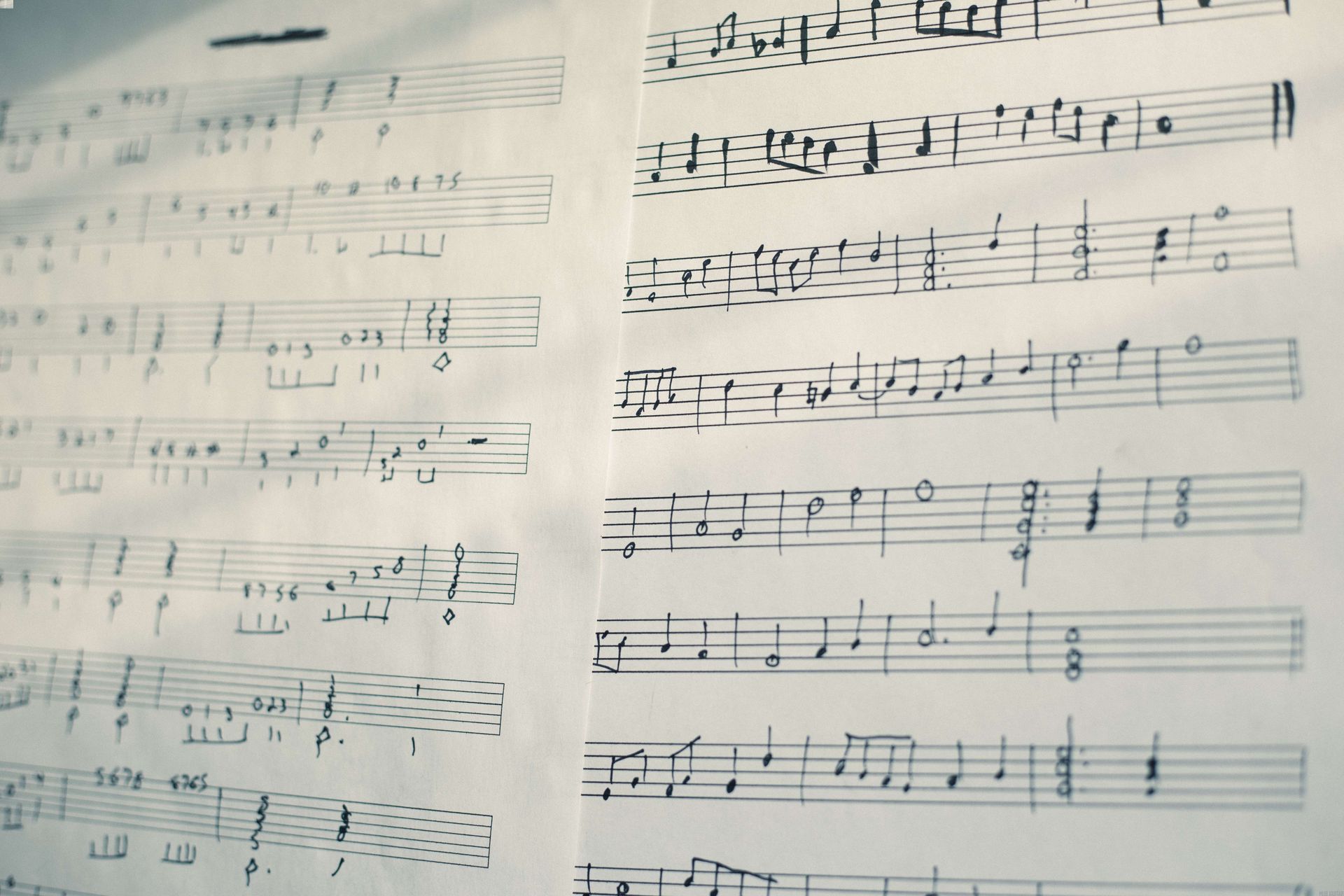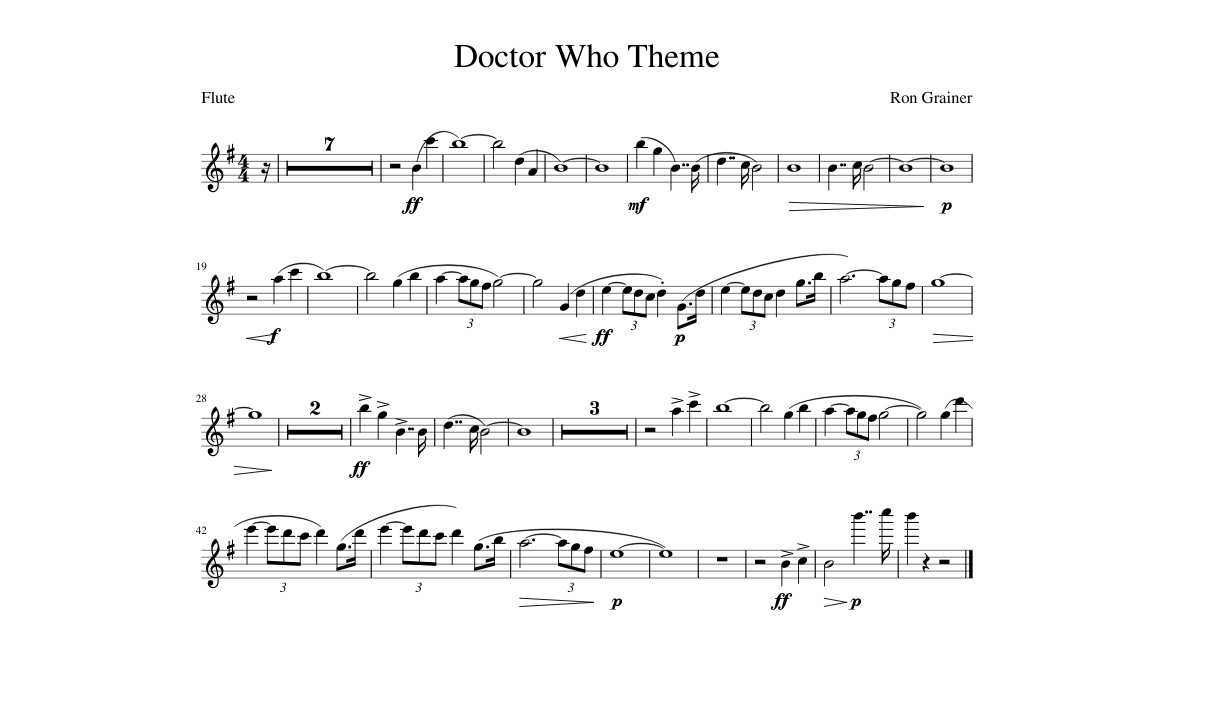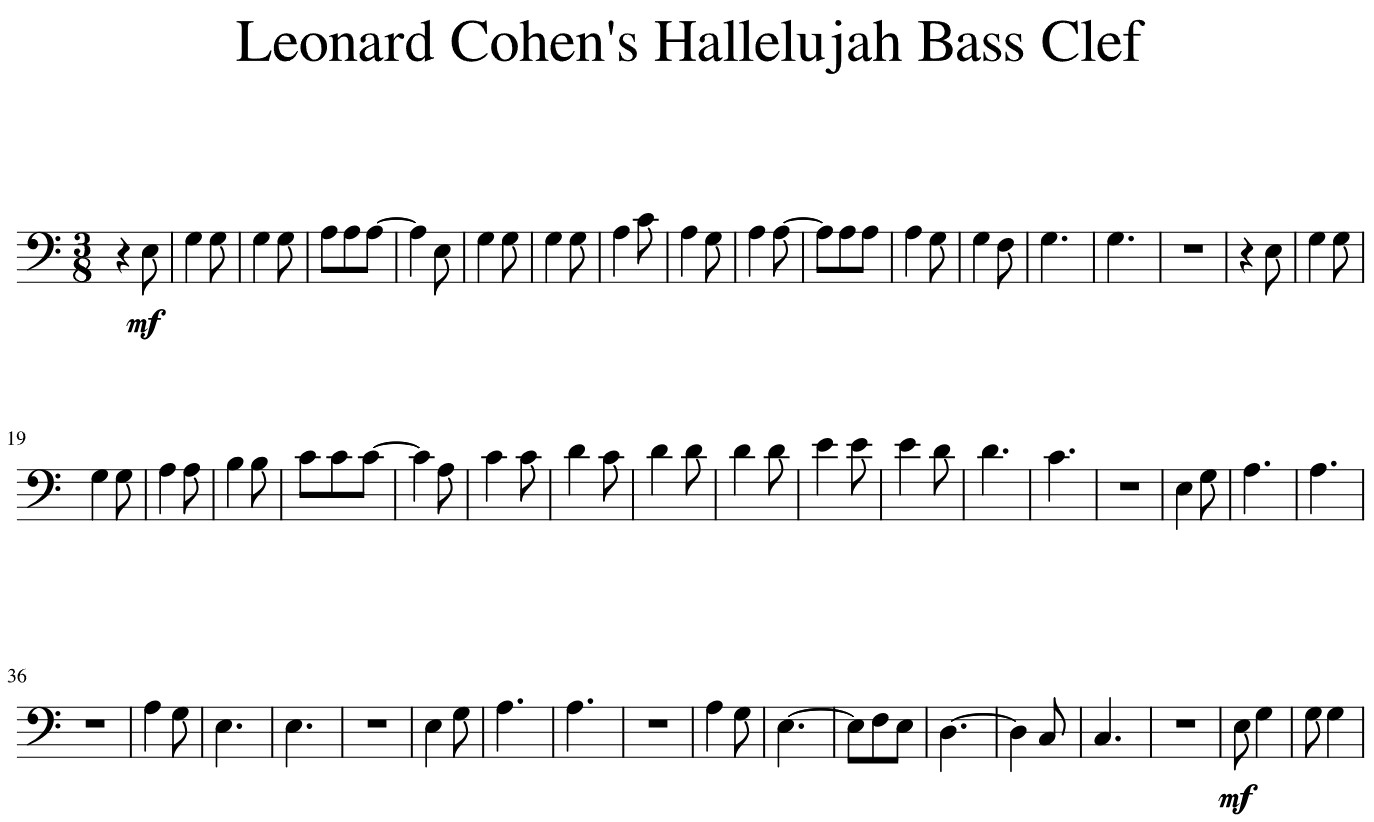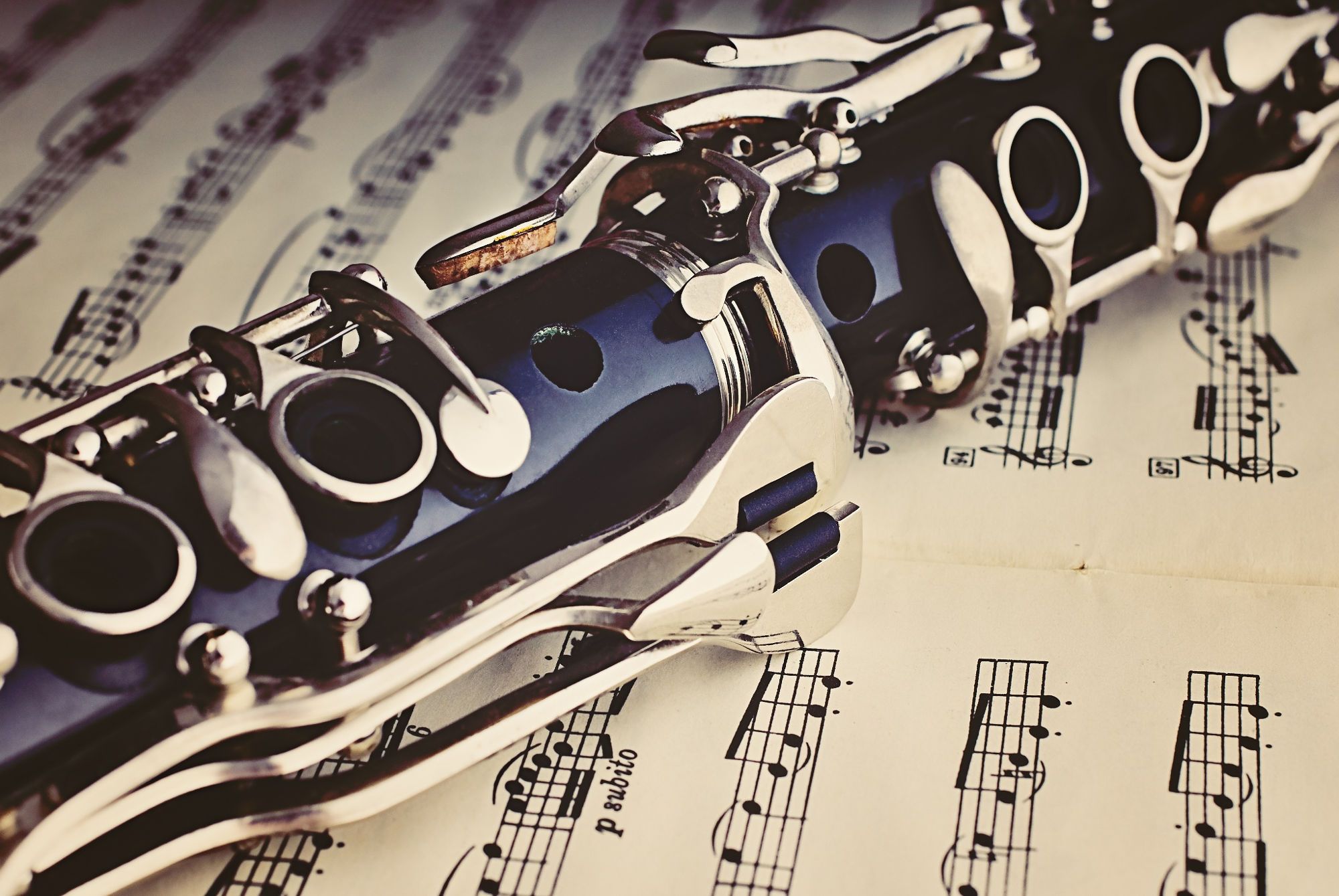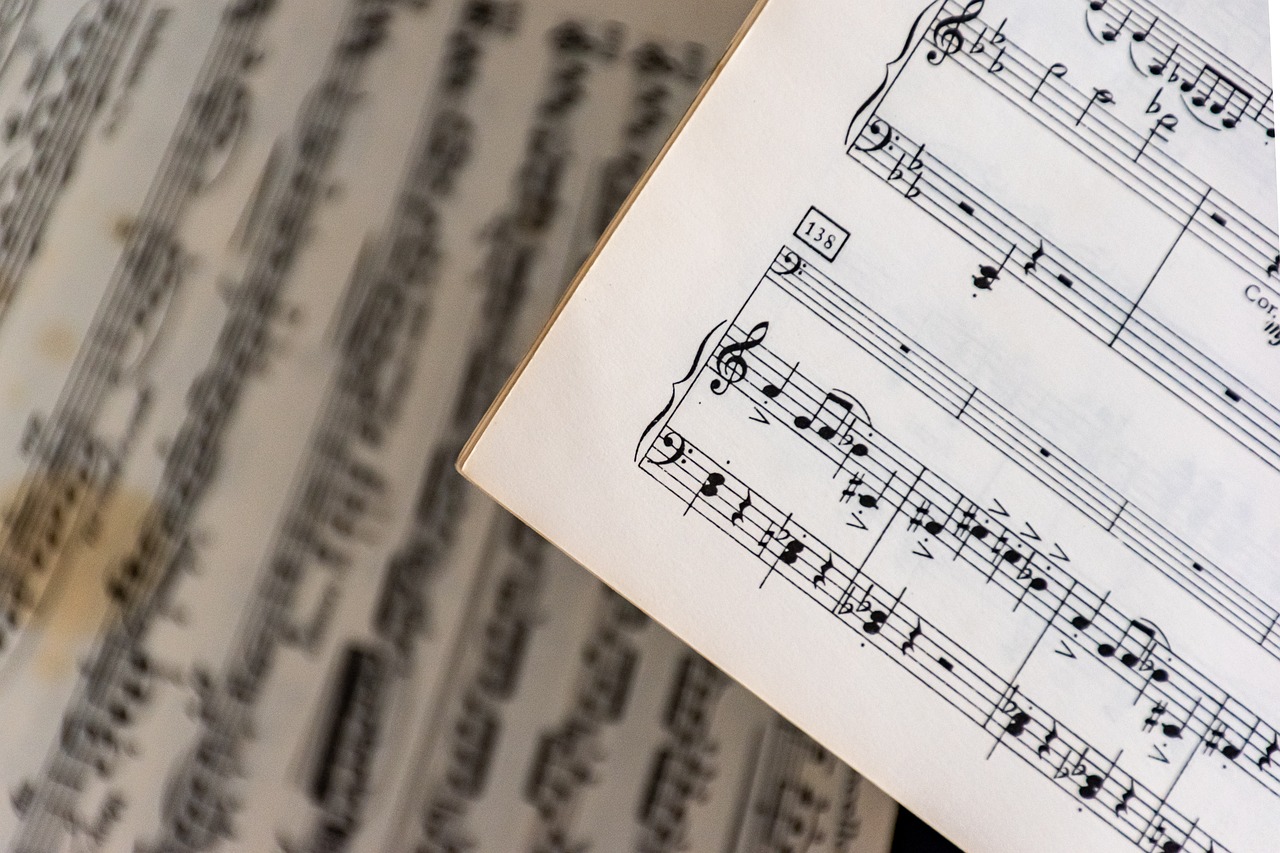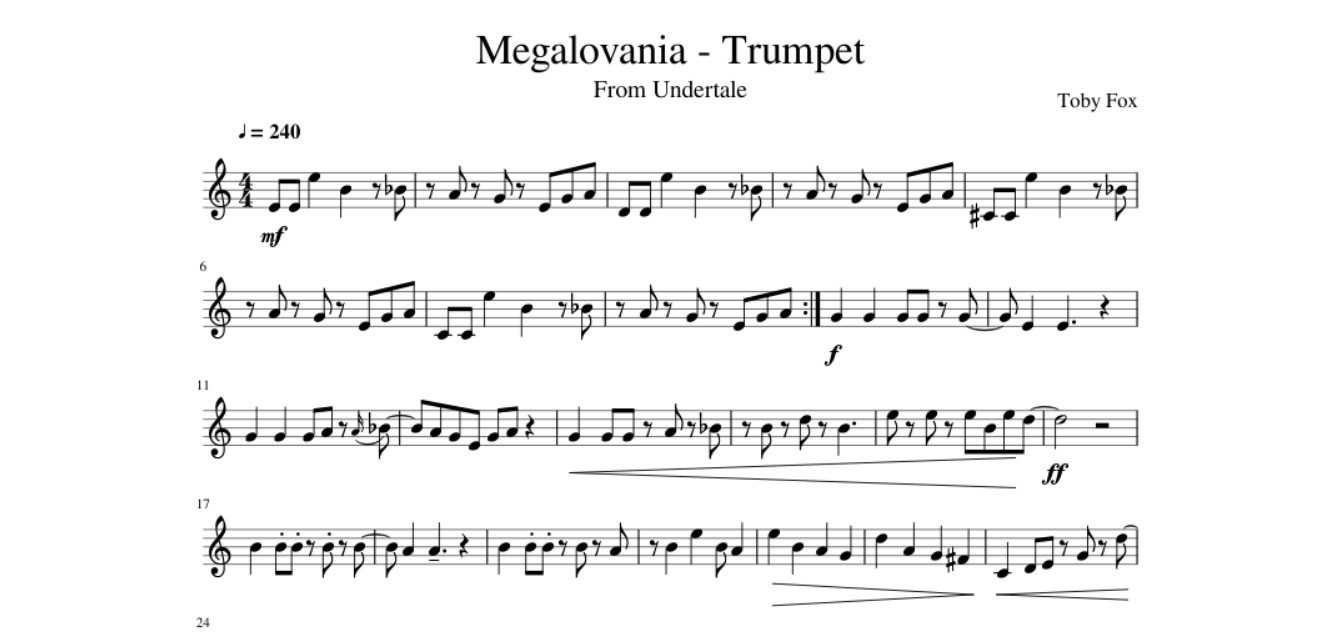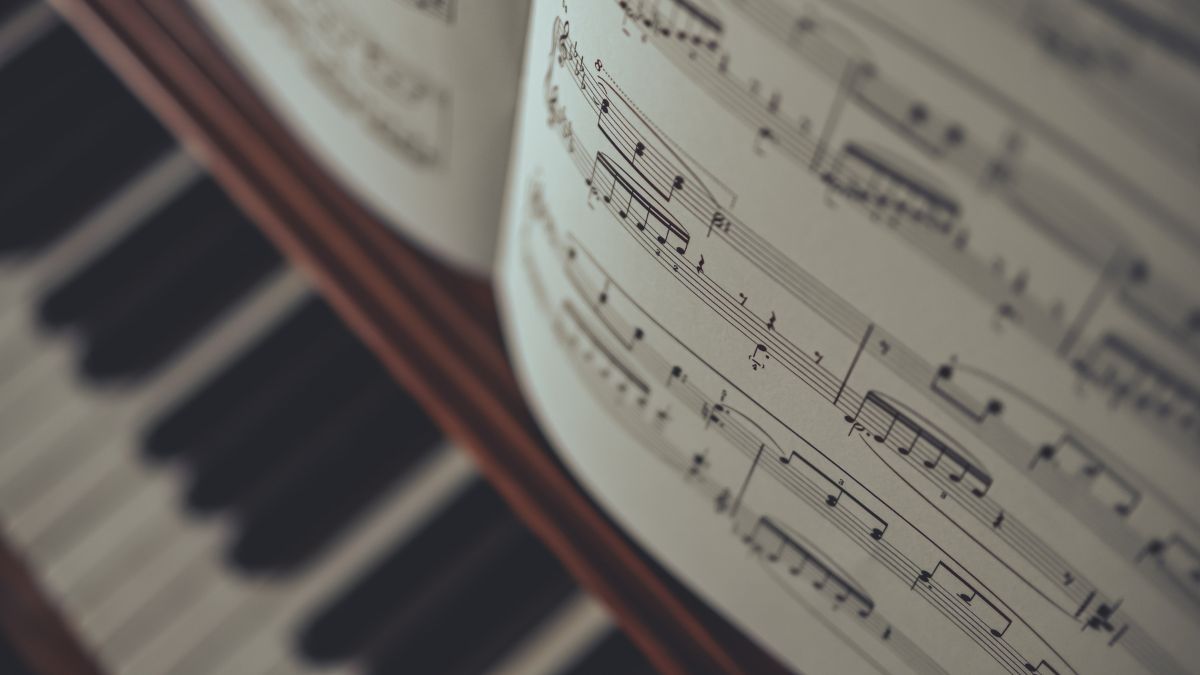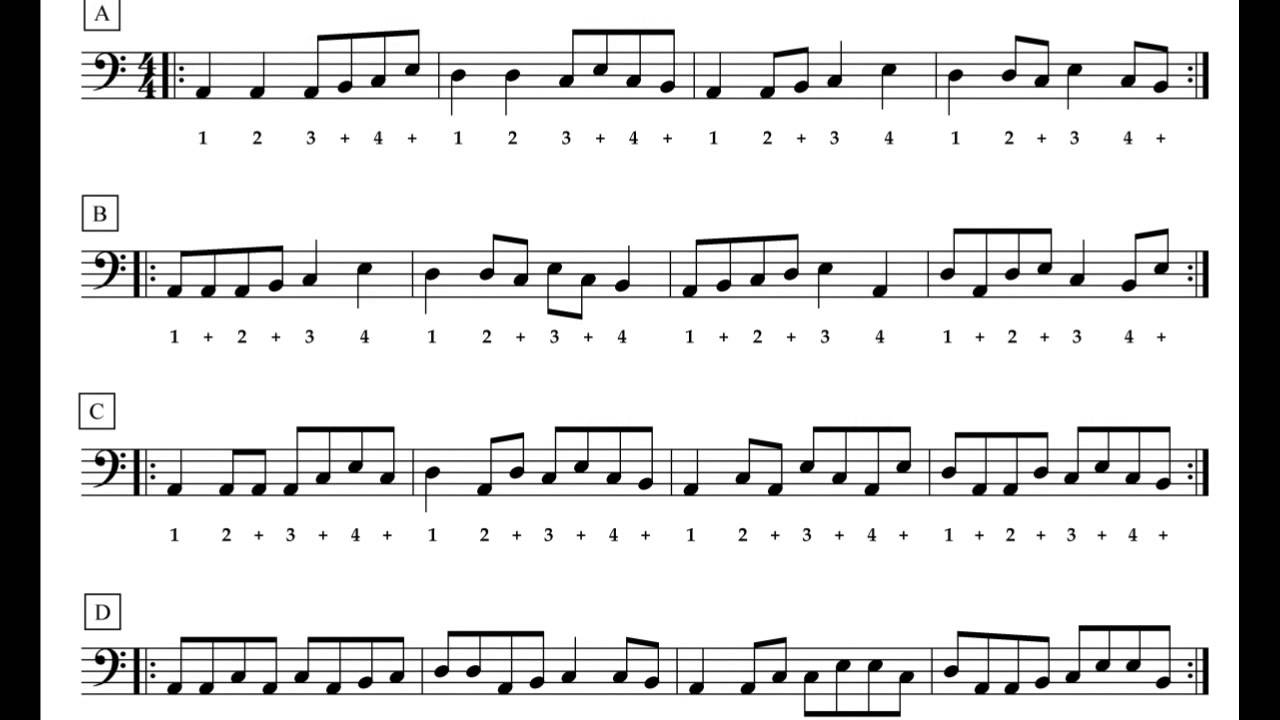Home>Production & Technology>Sheet Music>How To Read Sheet Music Flute


Sheet Music
How To Read Sheet Music Flute
Modified: January 22, 2024
Learn how to read sheet music for flute with comprehensive tutorials and step-by-step instructions. Enhance your flute playing skills with easy-to-follow sheet music guides.
(Many of the links in this article redirect to a specific reviewed product. Your purchase of these products through affiliate links helps to generate commission for AudioLover.com, at no extra cost. Learn more)
Table of Contents
Introduction
Welcome to the world of sheet music! If you’re a flutist, or aspiring to be one, learning how to read sheet music is an essential skill. Sheet music is the written language of music, and it allows musicians to communicate and reproduce musical compositions accurately.
Reading sheet music may seem intimidating at first, with its complex symbols and notations, but with a little guidance and practice, you’ll quickly become fluent in this language. In this article, we will explore the basics of sheet music reading, specifically tailored to flute players.
Whether you’re a beginner or an experienced musician looking to refresh your skills, this guide will provide you with the knowledge and techniques needed to navigate sheet music confidently.
Throughout this article, we will cover essential topics such as the staff, notes, fingerings, dynamics, rhythm, and various musical symbols. Additionally, we will provide helpful tips for practicing and memorizing sheet music effectively.
By the end of this guide, you’ll have a solid foundation in reading sheet music specifically for the flute, enabling you to tackle new songs and expand your repertoire with ease.
So, let’s dive in and unravel the mysteries of sheet music, empowering you to play the flute with precision and musicality!
The Basics of Sheet Music
Before delving into the specifics of reading sheet music for the flute, let’s first understand the fundamental elements that make up this musical notation system.
Sheet music is a written representation of music, consisting of a series of symbols and notations that convey the pitch, duration, dynamics, and other musical aspects of a composition. The sheet music is organized on a staff, which is a set of lines and spaces that represent the different pitches in the music.
The staff consists of five horizontal lines and four spaces. Each line and space represents a different pitch value, and notes placed on these lines and spaces indicate the specific pitch to be played. Additionally, the staff may have ledger lines above or below it to accommodate higher or lower pitches that fall outside the standard range.
Notes are the most basic symbols used in sheet music to represent pitch. They appear as oval-shaped heads placed on or between the lines and spaces of the staff. The position of the note on the staff determines its pitch: notes lower on the staff represent lower pitches, while notes higher on the staff represent higher pitches.
In addition to their placement on the staff, notes also have different shapes and stems that indicate their duration. Whole notes, half notes, quarter notes, and eighth notes are some examples of note shapes that represent different lengths of time.
Rests are another essential element of sheet music. They indicate periods of silence, allowing musicians to accurately interpret the rhythm and timing of a piece. Rests have symbols resembling notes, but they appear without stems.
Alongside notes and rests, sheet music includes other symbols and notations that provide additional information for the musician. This can include dynamics, which indicate the volume at which to play, such as piano (soft) or forte (loud); articulation marks, which define how a note is to be played, such as staccato (short and detached) or legato (smooth and connected); and various musical expressions and directions that guide interpretation.
Now that we’ve covered the basics of sheet music, let’s move on to understanding the specific elements of sheet music that are unique to the flute, starting with the staff and finding the appropriate fingerings for the notes.
Understanding the Staff
The staff is the foundational element of sheet music, and understanding its structure is crucial for reading music accurately. As a flutist, you will primarily focus on the treble clef staff, which is also known as the G clef.
The treble clef staff consists of five horizontal lines and four spaces, with each line and space representing a different pitch. The lines of the staff, from bottom to top, represent the pitches E, G, B, D, and F, while the spaces represent the pitches F, A, C, and E.
Since the flute is a transposing instrument, meaning it sounds a different pitch than what is written, the notes on the staff will appear higher than the actual pitch produced. This is because the flute is a non-pitched instrument, and its notes sound one octave higher than written.
When reading sheet music for flute, it’s essential to familiarize yourself with the open flute notes, also known as the “fundamental” notes. These open notes are produced by playing the flute without any keys or fingerings pressed down. The open notes on the flute are written on the staff as follows:
- E (lowest pitch on the flute) – bottom line of the staff
- G – second line of the staff
- B – fourth line of the staff
- D – top space of the staff
- F (highest pitch on the flute) – above the staff with a ledger line
By understanding the basic placement of these open notes on the staff, you can begin to navigate and recognize higher and lower pitch placements in sheet music.
In addition to the open notes, the flute has fingerings for each note that produce higher pitches. Learning these fingerings and associating them with the corresponding notes on the staff will allow you to play a wider range of pitches on the flute.
The treble clef staff for flute also includes ledger lines above and below the staff to accommodate higher or lower pitches that fall outside the standard range. It’s important to pay attention to these ledger lines and associate them with the appropriate notes to ensure accuracy when playing.
With a solid understanding of the treble clef staff and its orientation for flute playing, you are now ready to move on to learning the specific notes and fingerings for the flute.
Learning the Notes
Understanding the notes on the flute is essential for reading sheet music accurately and playing the correct pitches. The flute is a transposing instrument, meaning the music is written in one key but sounds another. As a flutist, you’ll typically read music written in the key of C, but the flute produces sounds one octave higher.
The flute has a range of approximately three octaves, starting from middle C and extending upwards. The notes on the flute are represented by the letters A, B, C, D, E, F, and G, and they correspond to specific fingerings on the instrument.
To learn the notes on the flute, it’s crucial to practice and memorize the fingerings associated with each note. Here is a breakdown of the basic fingerings for the open notes on the flute:
- E: No fingers down
- D: First finger on the left hand
- C: First and second fingers on the left hand
- B: First and third fingers on the left hand
- A: First, second, and third fingers on the left hand
- G: All fingers down on the left hand
As you progress and move into playing higher notes, you will learn additional fingerings and techniques such as half-hole fingerings and the use of keys and trill keys to produce specific pitches. Mastery of these fingerings will allow you to navigate the full range of the flute and play in a variety of keys.
Improving your note recognition and finger dexterity can be achieved through regular practice and repetition. Start by playing scales and exercises that focus on different note sequences, gradually expanding your range and building proficiency. Using a tuner or a piano to assist in pitch accuracy can also be beneficial.
Additionally, learning sight-reading skills will greatly enhance your ability to quickly identify and play notes on the flute. Practice reading sheet music regularly, starting with simple melodies and gradually progressing to more complex compositions.
By developing a solid foundation in note recognition and fingerings, you will ensure that you can navigate sheet music confidently and accurately, complementing your flute playing skills.
Next, let’s explore how to read flute fingerings specifically on sheet music, as this is an essential part of deciphering flute music notation.
Reading Flute Fingerings
When reading sheet music for flute, it’s important to understand how to interpret and read the flute fingerings indicated in the notation. Flute fingerings are represented by a combination of letters, numbers, and symbols that correspond to specific key combinations and techniques on the instrument.
Flute fingerings are typically notated as numbers above or below the staff, directly adjacent to the note they correspond to. These numbers indicate which combination of keys and fingerings to use to produce the desired pitch.
For example, the note C on the staff for flute is typically notated as “T” or “1” to indicate that you should use the first finger of your left hand to cover the first keyhole. Similarly, the note D might be represented by “T2” or “12” to indicate using the first finger of your left hand and the second finger of your left hand.
It’s important to note that some fingerings may have additional symbols or instructions associated with them. For instance, a “+” symbol above a fingering may indicate the use of a half-hole technique, where you partially cover a keyhole to achieve a specific pitch. A “o” symbol may indicate the use of an open key, meaning the corresponding key should be left uncovered.
In addition to the basic fingerings, sheet music may also indicate more advanced techniques such as trills, glissandos, or special effects. It’s important to refer to a flute fingering chart or consult your flute instructor to understand and master these techniques.
To effectively read flute fingerings, it’s necessary to have a good understanding of the general fingerings used on the flute and their corresponding pitches. Regular practice and familiarity with these fingerings will improve your ability to quickly identify and play the correct notes while reading sheet music.
As you gain experience and encounter different pieces of music, you’ll become more comfortable interpreting and executing the fingerings indicated in the notation, enabling you to play the music accurately and expressively.
Now that we’ve covered the basics of reading flute fingerings, let’s explore how to recognize and interpret dynamics and articulation markings in sheet music.
Recognizing Dynamics and Articulation
Dynamics and articulation markings are crucial elements of sheet music that provide instructions on how to play a piece expressively. As a flutist, it’s important to recognize and interpret these markings to add depth and nuance to your performances.
Dynamics indicate the volume or intensity at which a passage or a specific note should be played. Common dynamic markings include piano (soft), forte (loud), mezzo-piano (moderately soft), and mezzo-forte (moderately loud). These markings are often abbreviated with letters: “p” for piano, “f” for forte, and so on. A crescendo symbol (›) indicates a gradual increase in volume, while a decrescendo or diminuendo symbol (‹) indicates a gradual decrease in volume.
Articulation markings, on the other hand, provide instructions on how to play individual notes or phrases. They dictate the manner in which each note should be approached, whether it be short and detached (staccato), smooth and connected (legato), or a combination of both (staccato and legato). Other common articulation markings include accents, which emphasize a specific note, and slurs, which indicate a group of notes that should be played smoothly and without a break in between.
These markings are typically notated above or below the flute staff, often using symbols or Italian terms. It’s important to understand the meaning of these markings and experiment with different articulations to bring out the intended musical expression.
While sheet music provides specific dynamic and articulation markings, it’s important to remember that musical interpretation is subjective to some extent. Use the notations as a guideline, but feel free to express your own musicality and style as well.
Listening to professional recordings or attending live performances can also provide valuable insights into how dynamics and articulations are interpreted by experienced flutists. Pay attention to the expressiveness and subtle nuances in their performances, and strive to incorporate similar techniques into your own playing.
With time and practice, recognizing and interpreting dynamics and articulation markings will become second nature, allowing you to infuse your flute playing with the appropriate expression and musicality as intended by the composer.
Next, let’s explore the importance of rhythm and time signatures in sheet music and how they impact your flute playing.
Following Rhythm and Time Signatures
Rhythm is a fundamental aspect of music, and as a flutist, it’s important to accurately follow and interpret the rhythm indicated in sheet music. Rhythm refers to the organization and duration of musical sounds, creating a sense of timing and pulse.
Sheet music uses a combination of notes, rests, and various symbols to indicate rhythm. The length of a note is determined by its shape and the presence of additional flags or beams. Whole notes, half notes, quarter notes, eighth notes, and sixteenth notes are some common note durations. Rests, which represent silence, follow a similar pattern.
In addition to note durations, time signatures play a crucial role in indicating the rhythmic structure of a piece. Time signatures consist of two numbers written at the beginning of a staff. The top number indicates the number of beats in each measure, while the bottom number represents the value assigned to one beat.
For example, a time signature of 4/4 indicates four beats per measure, with a quarter note receiving one beat. This is the most common time signature in music, often referred to as “common time” or simply “4/4.” Other common time signatures include 3/4 (three beats per measure, with a quarter note receiving one beat) and 6/8 (six beats per measure, with an eighth note receiving one beat).
When playing flute, it’s crucial to develop a strong sense of pulse and rhythm. Counting beats and subdividing them can help you maintain a steady tempo and accurately interpret the rhythmic patterns in the music.
Practicing with a metronome or using a rhythmic app can also be beneficial in developing a solid sense of timing and precision. Start by playing simple exercises and gradually progress to more complex rhythms as your skills improve.
Listening to recordings of the music you’re practicing can also aid in internalizing the rhythmic feel and understanding how it should be executed. Focus on the rhythmic nuances and accents in the performances to enhance your own rhythmic interpretation.
Remember that reading rhythm accurately requires diligent practice and concentration. Take your time, work through difficult sections slowly, and gradually increase the tempo as you become more comfortable with the rhythms.
Now that we have covered rhythm and time signatures, let’s move on to exploring the various musical symbols and notations you may encounter in sheet music for the flute.
Interpreting Musical Symbols and Notations
Sheet music is filled with a variety of symbols and notations that provide important information for flutists. Understanding and interpreting these symbols will enhance your ability to accurately perform the music and bring out the intended musical expression.
One common symbol you may encounter in flute sheet music is the key signature. The key signature appears at the beginning of each staff and indicates which notes should be played as sharps or flats throughout the piece. Familiarize yourself with the key signatures for the different major and minor keys to ensure you play the correct notes.
Another important notation is the breath mark or phrase mark, indicated by a symbol resembling a comma (‘) or a curved line. These marks indicate where you should take a breath between phrases or musical segments. Understanding the structure of the music and phrasing can enhance the overall musicality of your performance.
Grace notes are small, quick notes that are played before the main note. They are often notated with small slanted stems and can add ornamentation and flair to your playing. Pay attention to their placement and duration within the music, as they are meant to be played quickly and lightly.
Repeats are also common in sheet music and are indicated by repeat symbols. These symbols instruct you to go back and repeat a section of music. They can save you time and allow you to practice specific sections more efficiently.
Slurs are curved lines that connect multiple notes and indicate that those notes should be played smoothly and without separating them. Slurs help create a legato and connected sound. Pay attention to the shape and length of the slurs, as they indicate the musical phrasing and interpretation.
Articulation markings, such as staccato dots (.) or accents (> or ^), provide further instructions on how to articulate and attack each individual note. Staccato dots indicate short and detached notes, while accents emphasize a specific note and give it extra emphasis. Experiment with different articulation techniques to bring out the character and style of the music.
Dynamics and expressions are also essential notations in sheet music. They provide instructions on the volume, intensity, and mood of the music. Pay attention to abbreviations such as pp (pianissimo – very soft), p (piano – soft), ff (fortissimo – very loud), and f (forte – loud). Interpret these markings to bring the intended musical expression to life.
In addition to these notations, there are countless other symbols and musical expressions that you may encounter in flute sheet music. It’s essential to familiarize yourself with various musical terms and symbols by referring to a reputable music dictionary or consulting with your flute instructor.
As you become more experienced in reading sheet music, you will develop a stronger ability to interpret and incorporate these symbols and notations into your playing, bringing out the full musicality and expression of the music.
Now that we’ve explored the various symbols and notations in sheet music, let’s move on to some helpful tips for practicing and memorizing sheet music effectively.
Tips for Practicing and Memorizing Sheet Music
Practicing and memorizing sheet music is an essential part of becoming a proficient flutist. Here are some useful tips to help you effectively practice and memorize your flute repertoire:
- Break it down: Start by breaking the music into smaller sections, such as phrases or measures. Work on mastering each section individually before putting them together. This approach helps you focus on the details and gradually build your confidence.
- Slow it down: Begin practicing at a slower tempo, gradually working your way up to the desired speed. This allows you to pay closer attention to the notes, fingerings, dynamics, and articulations, ensuring accuracy and precision.
- Practice hands separately: If the sheet music includes complex passages or difficult fingerings, practice one hand (left or right) at a time. This reduces the cognitive load and helps you gain better control and fluency in each hand individually.
- Utilize a metronome: Use a metronome to develop a steady sense of rhythm and timing. Start at a slow tempo and gradually increase the speed as you become more comfortable. The metronome also helps you maintain consistent timing and strengthens your internal sense of pulse.
- Repetition is key: Repeat challenging sections of the music to reinforce muscle memory and build familiarity. Repetition helps solidify your technique and allows you to play with greater ease and confidence.
- Record yourself: Use a recording device or app to record your practice sessions. Listen back to these recordings to identify areas for improvement, assess your progress, and make necessary adjustments to your playing.
- Engage in focused listening: Listen to recordings by professional flutists who have performed the music you’re learning. Pay attention to their interpretation, phrasing, dynamics, and articulations. Use their performances as inspiration and a reference for your own playing.
- Create mental cues: Visualize the sheet music in your mind and mentally recite the fingerings and notes as you practice away from your flute. This mental repetition helps reinforce your memorization and recall of the music.
- Perform regularly: Seek opportunities to perform your repertoire in front of others, whether it be in formal settings or informally for friends and family. Performing enhances your confidence, musical expression, and solidifies your memorization.
Remember, effective practice and memorization require patience, discipline, and consistency. Take the time to break down the music, work on specific areas of improvement, and slowly build your skills over time.
By implementing these tips and developing a strategic practice routine, you’ll gradually master the sheet music, play with confidence, and deliver memorable flute performances.
Now that we’ve covered tips for practicing and memorizing sheet music, let’s conclude our journey through the world of sheet music for the flute.
Conclusion
Congratulations! You have reached the end of our comprehensive guide to reading sheet music for the flute. By now, you should have a solid understanding of the basics of sheet music, including the staff, notes, fingerings, dynamics, rhythm, and various musical symbols.
Reading sheet music is an essential skill for every flutist, and with practice, dedication, and a solid foundation, you can confidently navigate and interpret sheet music to bring your flute playing to life.
Remember to start with the fundamentals, such as understanding the staff, notes, and fingerings. From there, explore the nuances of dynamics, articulation, rhythm, and time signatures to enhance your musical expression and interpretation.
Practicing and memorizing sheet music requires patience, repetition, and a strategic approach. Break down the music into smaller sections, practice in a slow and focused manner, and utilize helpful tools such as metronomes and recordings.
As you progress on your flute journey, aim to cultivate a deep connection with the music you play. Listen to professional recordings, attend live performances, and embrace your own creativity and personal style in your interpretations.
Continue to expand your repertoire, challenge yourself with diverse genres and styles, and seek opportunities to perform in front of others to share your musicality and passion.
Ultimately, mastering the art of reading sheet music for the flute is a lifelong journey. Embrace the process, enjoy the fulfillment that comes from bringing written music to life, and let your flute soar with the melodies and expressions you create.
So, pick up your flute, open that sheet music, and embark on new musical adventures with confidence and joy!


